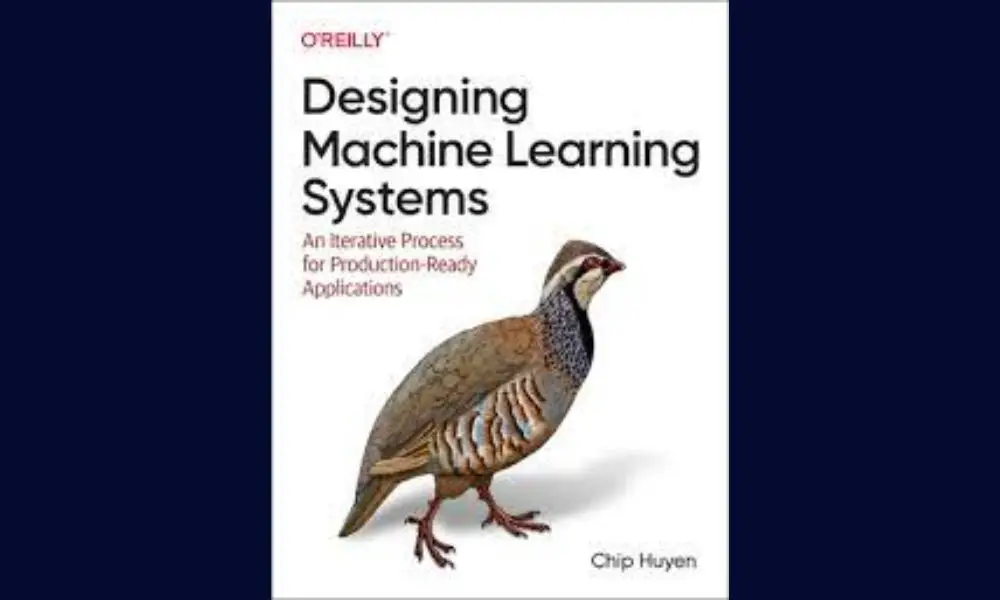Designing Machine Learning Systems: An Iterative Process for Production-Ready Applications by Chip Huyen
Table of Contents
Introduction
Navigating the complex landscape of machine learning (ML) systems can be a challenging endeavour, especially in an ever-evolving technological era.
“Designing Machine Learning Systems: An Iterative Process for Production-Ready Applications” by Chip Huyen comes as a guiding light in this rapidly transforming domain. With its comprehensive coverage of essential concepts, practical insights, and real-world examples, this book offers a holistic approach to designing ML systems that are robust, adaptable, and poised for success.
Book Summary
In this meticulously crafted book, Chip Huyen delves into the intricate realm of ML systems with a focus on practicality and real-world applicability.
The book is structured to provide a gradual transition from foundational concepts to advanced topics, making it accessible to both beginners and experienced practitioners.
From engineering data and choosing metrics to automating model development, monitoring, and responsible AI, the book covers an impressive breadth of subjects.
Book Information
- Title: Designing Machine Learning Systems: An Iterative Process for Production-Ready Applications
- Author: Chip Huyen
- Publisher: O’Reilly Media
- Publication Date: June 21, 2022
- Pages: 386
- Formats: Paperback, Kindle
- Rating: 4.6/5 (based on 334 global ratings)
Overview of the Book
The book starts by setting the stage for its iterative approach to designing ML systems, considering the complexity and uniqueness of each case. It outlines the scenarios where the book’s content is most relevant, including engineering data, automating processes, developing monitoring systems, and fostering responsible ML practices. Chip Huyen acknowledges the varied audience, which ranges from ML engineers and data scientists to technical leaders and business decision-makers.
Key Concepts
The book covers a wide range of topics crucial for building production-ready ML systems. It touches on data processing, model selection, retraining strategies, monitoring, platform architecture, and responsible ML practices. Notably, it bridges the gap between theory and practice, offering insights into translating theoretical knowledge into tangible solutions. The book’s detailed exploration of bias, fairness, and responsible AI is particularly valuable in today’s AI landscape.
Writing Style and Clarity
Chip Huyen’s writing style is commendable for its clarity and practicality. Complex concepts are explained with simplicity, making it easy for readers to grasp intricate ideas. The book’s real-world case studies, ample references, and discussion of trade-offs add depth to the content, enabling readers to understand not only what works but also why it works.
Strengths of the Book
The book’s strengths lie in its comprehensive coverage and practicality. Chip Huyen takes a holistic approach, considering the interplay of various components within an ML system. The real-world case studies provide context and relatability, allowing readers to see how theoretical concepts translate into actual applications. Furthermore, the book’s emphasis on automation and adaptability equips readers to create ML systems that thrive in dynamic environments.
Areas for Improvement
While the book excels in clarity and practical advice, readers seeking deeper technical insights might find certain sections lacking in technical depth. Additionally, more visual aids, such as diagrams or flowcharts, could enhance the understanding of complex architectural concepts.
Who Should Read This Book
“Designing Machine Learning Systems” is a must-read for a wide range of individuals. ML engineers, data scientists, data engineers, and technical leaders will find valuable insights to enhance their practices. Those transitioning from academia to industry will benefit from the book’s practical guidance on real-world challenges. However, beginners with minimal understanding of ML concepts might find certain sections challenging, though this is mitigated by the author’s effort to provide context.
Practical Implications and Impact
The book’s impact extends beyond knowledge acquisition. It equips readers with actionable strategies to design, develop, and deploy ML systems that can adapt to changing requirements. By addressing crucial aspects such as automation, monitoring, and responsible AI, the book empowers practitioners to build ML systems that deliver tangible results and drive positive outcomes for businesses and society.
Conclusion
“Designing Machine Learning Systems: An Iterative Process for Production-Ready Applications” stands as an exceptional resource for anyone involved in building ML systems. Chip Huyen’s insightful approach, comprehensive coverage, and practical insights make this book a valuable asset for both beginners and experienced practitioners.
By combining theory with real-world applications, the book equips readers to navigate the complexities of ML system design, enabling them to create impactful and adaptive solutions that drive success in today’s dynamic technological landscape.
Frequently Asked Questions
Q1: Is this book suitable for beginners with limited ML knowledge?
A: While the book covers a wide range of ML system aspects, beginners with minimal ML understanding might find certain sections challenging. However, the author’s effort to provide context and relatable examples helps bridge the knowledge gap.
Q2: Does the book provide practical examples and case studies?
A: Yes, the book includes real-world case studies and practical examples that illustrate concepts and solutions. This enhances the book’s applicability and relatability to real-world scenarios.
Q3: Is the book focused solely on deep learning, or does it cover classical algorithms as well?
A: The book covers both deep learning and classical algorithms, catering to readers with diverse backgrounds and interests in ML system design.
Q4: Does the book discuss ethical considerations and responsible AI practices?
A: Yes, the book dedicates sections to ethical considerations, bias, fairness, and responsible AI practices. It addresses the importance of building ML systems that are not only functional but also ethical and unbiased.
Q5: Does the book provide code snippets and tutorials for implementation?
A: While the book includes code snippets to illustrate certain concepts, its primary focus is on providing in-depth discussions, trade-offs, and concrete examples. Readers can find tutorials for specific tools online when needed.
